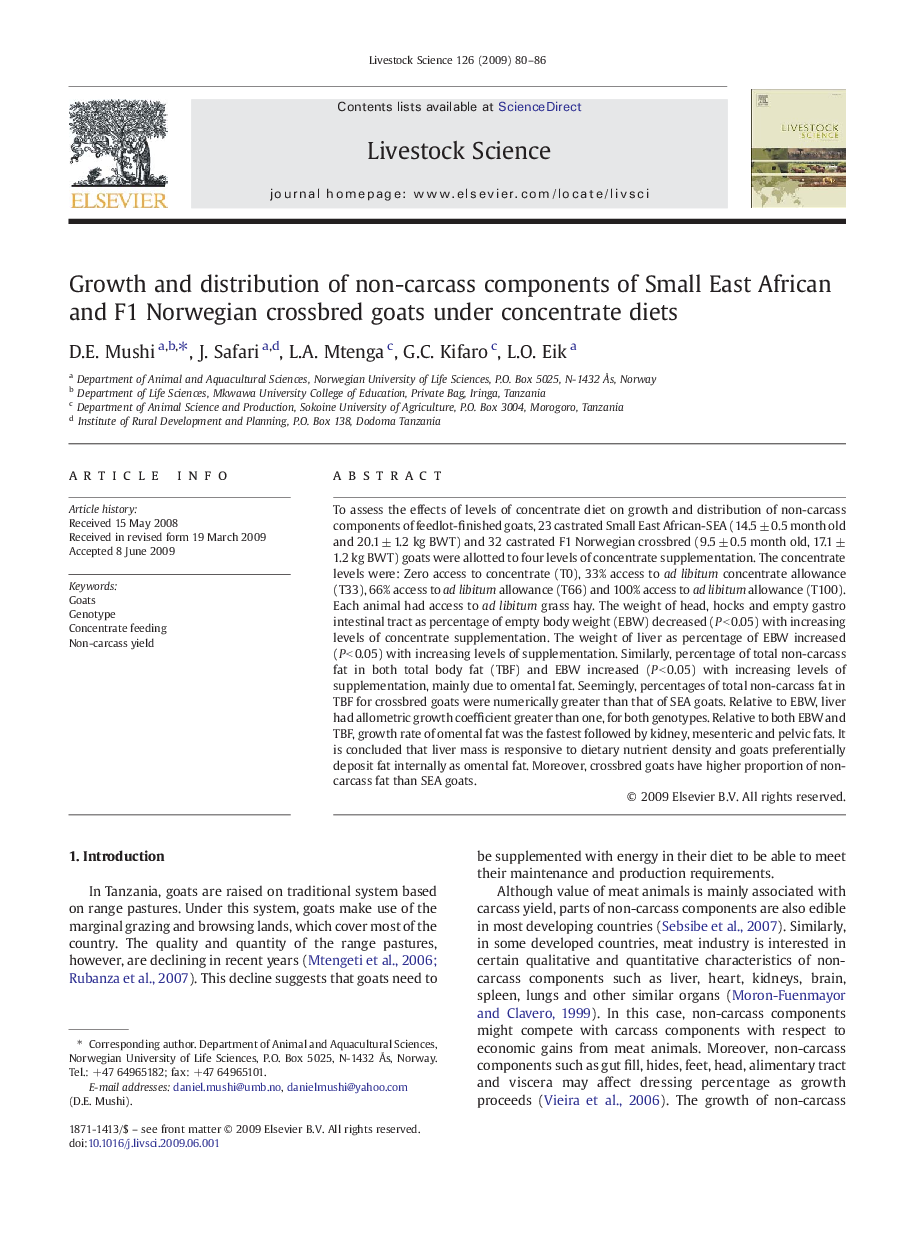| Article ID | Journal | Published Year | Pages | File Type |
|---|---|---|---|---|
| 2447925 | Livestock Science | 2009 | 7 Pages |
To assess the effects of levels of concentrate diet on growth and distribution of non-carcass components of feedlot-finished goats, 23 castrated Small East African-SEA (14.5 ± 0.5 month old and 20.1 ± 1.2 kg BWT) and 32 castrated F1 Norwegian crossbred (9.5 ± 0.5 month old, 17.1 ±1.2 kg BWT) goats were allotted to four levels of concentrate supplementation. The concentrate levels were: Zero access to concentrate (T0), 33% access to ad libitum concentrate allowance (T33), 66% access to ad libitum allowance (T66) and 100% access to ad libitum allowance (T100). Each animal had access to ad libitum grass hay. The weight of head, hocks and empty gastro intestinal tract as percentage of empty body weight (EBW) decreased (P < 0.05) with increasing levels of concentrate supplementation. The weight of liver as percentage of EBW increased (P < 0.05) with increasing levels of supplementation. Similarly, percentage of total non-carcass fat in both total body fat (TBF) and EBW increased (P < 0.05) with increasing levels of supplementation, mainly due to omental fat. Seemingly, percentages of total non-carcass fat in TBF for crossbred goats were numerically greater than that of SEA goats. Relative to EBW, liver had allometric growth coefficient greater than one, for both genotypes. Relative to both EBW and TBF, growth rate of omental fat was the fastest followed by kidney, mesenteric and pelvic fats. It is concluded that liver mass is responsive to dietary nutrient density and goats preferentially deposit fat internally as omental fat. Moreover, crossbred goats have higher proportion of non-carcass fat than SEA goats.
